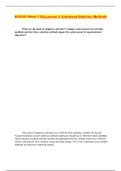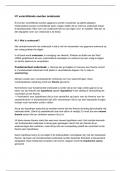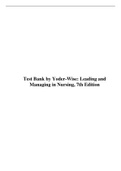Notes de cours
Invertebrates Lecture 2 Notes - Platyhelminthes, molluscs and annelids
- Cours
- Établissement
Detailed and concise FIRST CLASS notes which are easy to understand and learn from, covering the second lecture of Invertebrate Zoology in the BS1070 module.
[Montrer plus]












